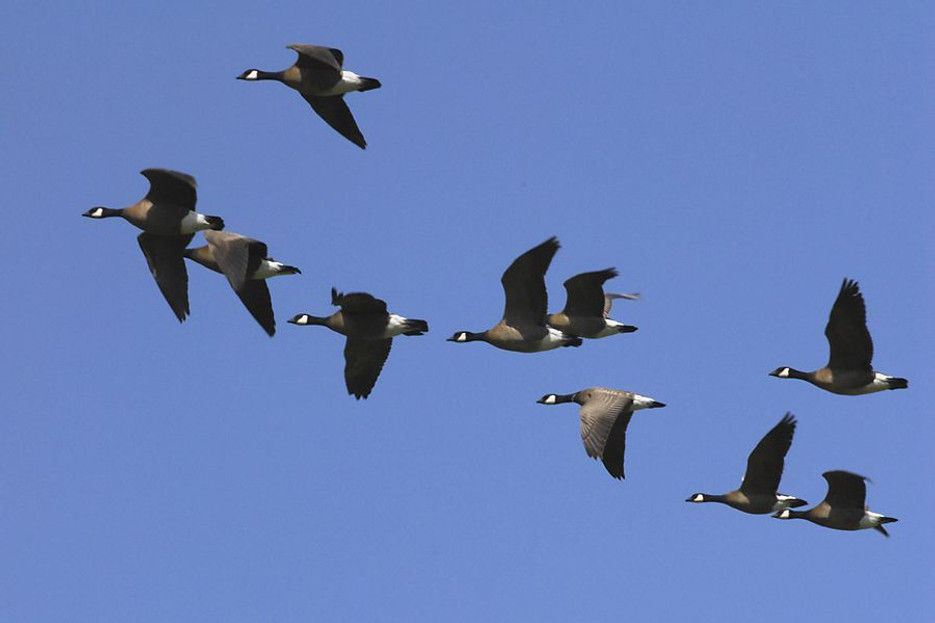Prepare for the Canada Goose Migration
There is an annual migration that birds achieve between their breeding and wintering grounds. It is one of the wonders of the world. Routinely, about 30 species of geese migrate each year. The flyways or migration corridors of the waterfowl are broad and well defined migration routes. The Canada Goose, like most geese, is naturally migratory where the wintering range is mostly the United States. You will know when they are migrating because you will hear their calls overhead when large groups of Canada Geese are flying in the V-shape formation. This signals the transition into spring from fall. In some areas such as California to the Great Lakes, some populations of geese have become non-migratory due to sufficient winter food sources and lack of known predators.
Canada Geese are much more common in North America than they use to be. The proliferation of golf courses, lawns, and parks give the geese a very reliable habitat. This is also the reason that in some areas the geese stay all year round instead of migrating. Deterrents are needed to keep geese from damaging the areas. They will eat the grass as well as fowl the lawns with their droppings. A goose will eat 2-3 pounds of grass and deposit about 1-2 pounds of droppings each day. These droppings potentially can be infected with disease and parasites. They are also considered hazards when gaggles of geese congregate near airports. When they collide with a plane, it can be life changing not only for the geese but the plane and its passengers.
Goose deterrents are needed for sure. Whether you have resident or migratory geese around, this is the ideal time to implement some sort of bird control strategy. Canada Geese are protected under the Federal Migratory Bird Treaty Act of 1918. The act makes it unlawful to injure or harm a goose and to move or damage its nests and any eggs in the nests. It will be a priority to deter the geese before they start nesting. Nesting in parks and golf courses can really put a damper on the playground. Geese like to nest on the ground, preferably where they can view all around the nest and close to water.
How to Prepare
Preparation simply means implementation of effective goose control. This does not mean poisons, pellet guns or any other lethal means. There are plenty of safe and humane bird control products to help keep the geese away.
Migrate Goose Repellent is a liquid substance that is sprayed on golf courses, parks, shrubs, landscaping, shorelines and any other grassy area. The actual substance that deters the geese is non-toxic Methyl Anthranilate, which is actually just a grape extract. This extract has been proven to deter geese by irritating their trigeminal nerve and mucous membranes which discourages the geese from making themselves comfortable. It is a very cost effective way to manage the pests. One gallon of repellent treats 16,000 square feet of grassy area. Rain and sprinklers will not wash off the repellent either. It will also not harm other animals including domestic animals. The non-toxic grape extract is registered with the EPA.
The Solar Bird Chase Super Sonic is another product that will get rid of geese. It is a sound deterrent that broadcasts distress and predator calls to scare the birds away from an area. It is ideal for large open places. It operates between 65-105 decibels. Do not be fooled by other products on the market advertising ultrasonic sounds. Birds hear at about the same level of humans, and the ultrasonic products do not work.

